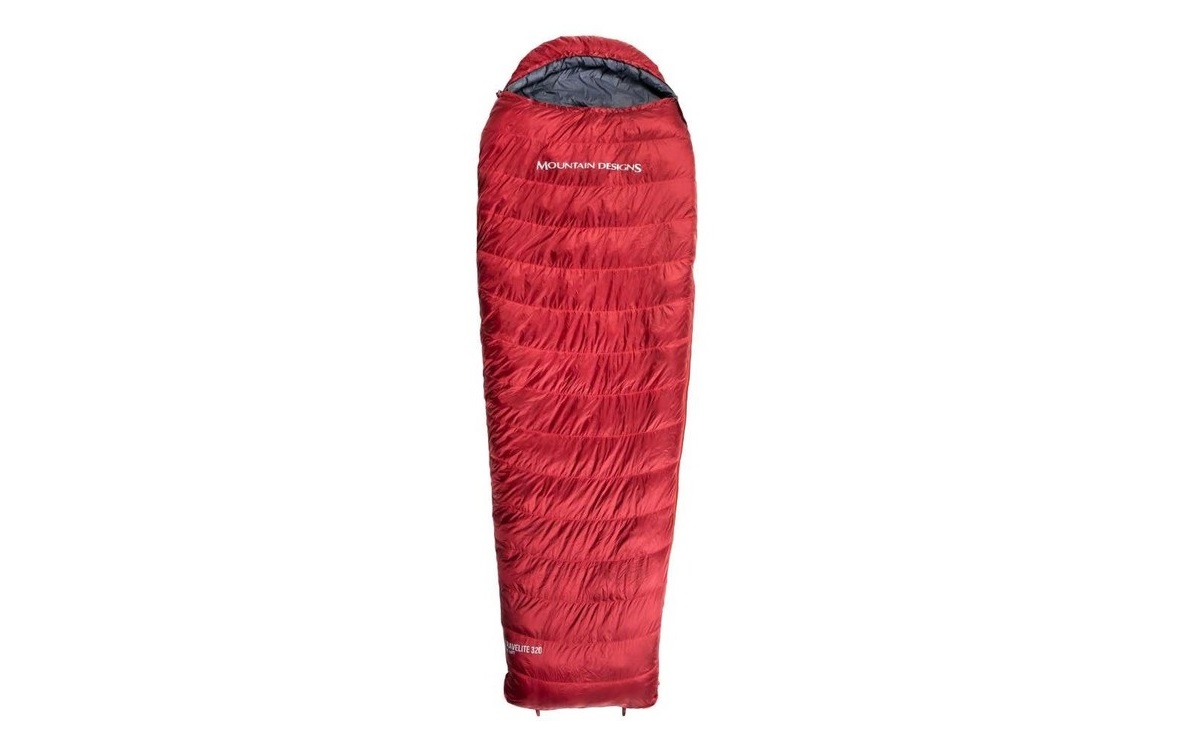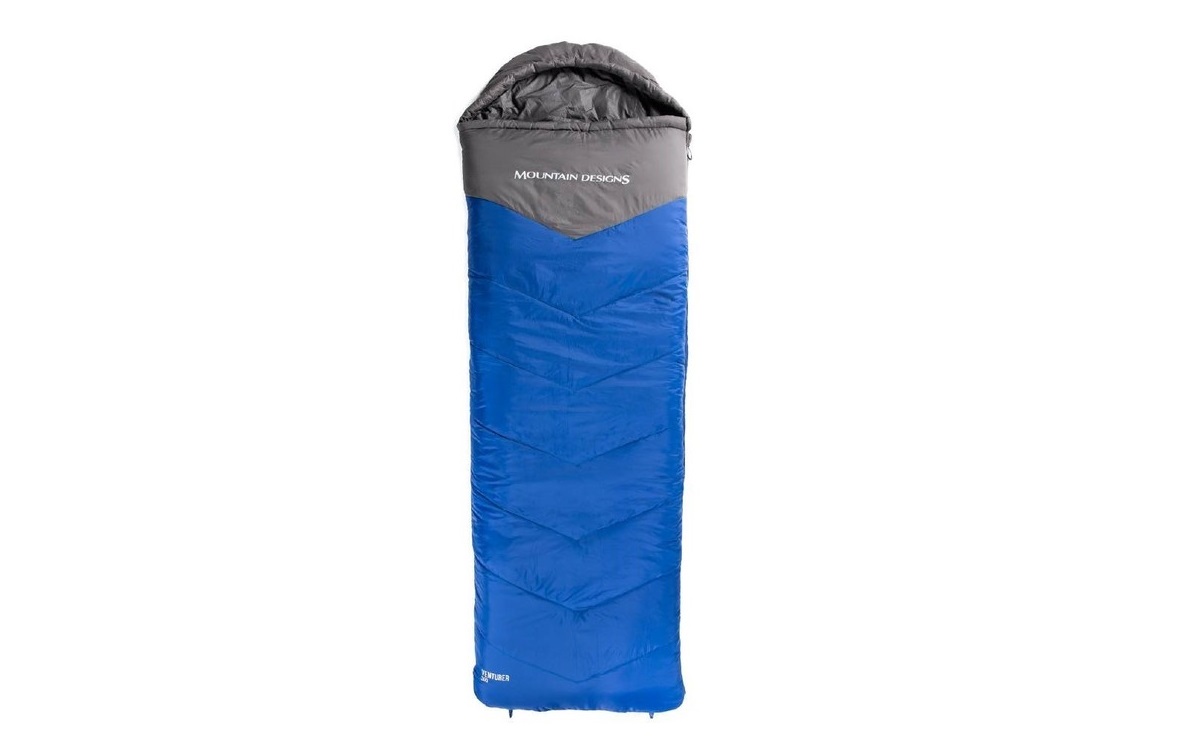| Your browser is not supported. | ||
|
Please browse our site using any of the following options:
| ||
The Evolution Of The MD Sleeping Bag
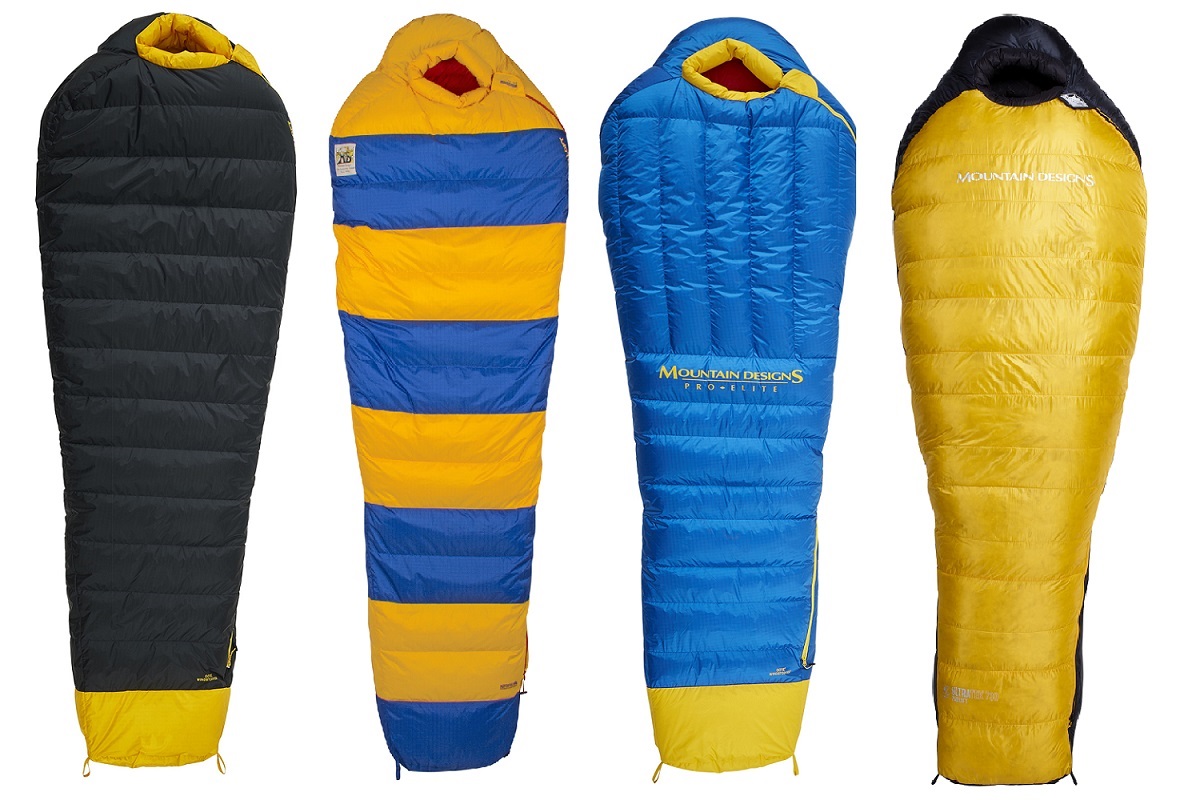
The first Mountain Designs sleeping bag was designed way back in the mid-70s for a daring alpine expedition to Mt Fitz Roy in Patagonia. Ever since that first model we embraced innovation, and in fact, brought a number of 'technical firsts' to Australia and the world throughout that rapidly-evolving era of product design and manufacture. Such was the advancement of these inventions that many continue to be used today.
From highly technical sleeping bags for use above the snowline to basic sleeping bags for travel, we integrate specific features into our designs to maximise warmth and comfort, and minimise weight. This enables you to get a bag to match perfectly your requirements of weight, durability, size and insulation, as well as the activity you need it for. Read on to learn about some of the early sleeping bag innovations that Mountain Designs founder Rick White and his early design team brought to the outdoor retail market.
First to manufacture the canted Footbox (1975)
The canted footbox, or angled footbox, allows your feet to rest in a more natural anatomical position when you are lying on your back. This creates a layer of insulation around the entire foot section and reduces redundant space - and subsequently cold spots - at your feet, toes and lower leg. Typically you won't see this on entry-level bags, but for highly technical down bags used on alpine expeditions this design feature is essential to ensuring your warmth is maximised. This was introduced by Mountain Designs in 1975 and today can be seen on our elite UltraTek down sleeping bag range.
First with stretch cross-block baffles and slant-wall baffles (1976)
The purpose of cross-block baffles is to hold the insulation in place when you are using the bag, and keep an even spread of insulation throughout the baffles themselves. Preventing down migration ensures optimal distribution and therefore maximum insulation.
First to use lightweight 40 denier taffeta and ripstop nylons (1976)
We all want products that are built to last, but we also want them to be as light as possible. Finding the balance between durability and lightweight performance is indeed a science. Mountain Designs introduced lightweight 40D taffeta and ripstop nylons in 1976 to strike this balance, giving their down sleeping bag range of the time a high-performance edge. They also added high-loft 95% down.

Mountain Designs founder Rick White (left) on quality control - he was very hands-on when it came to product design. (Image courtesy of Rick White)
First with 3D draught tubes, GORE-TEX® outers, neck muffs and 700 fill power (1978)
1978 was a big year for Mountain Designs sleeping bag innovation. Firstly, the technical down sleeping bags were given 3D draught tubes along the main zip opening to cover the zip itself. This tube of insulation is designed to help prevent heat from escaping through the teeth of the zip, and cold air passing through gaps. In addition to this, GORE-TEX® shells and 700 loft fill power down were used. The bags also featured the first neck baffle or neck muff. This is the chamber of down that can be closed around your collar near your shoulders and neck to keep more warmth in.
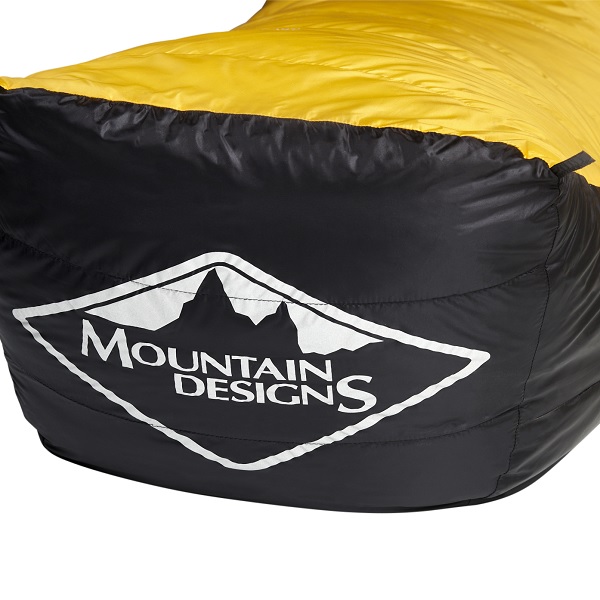
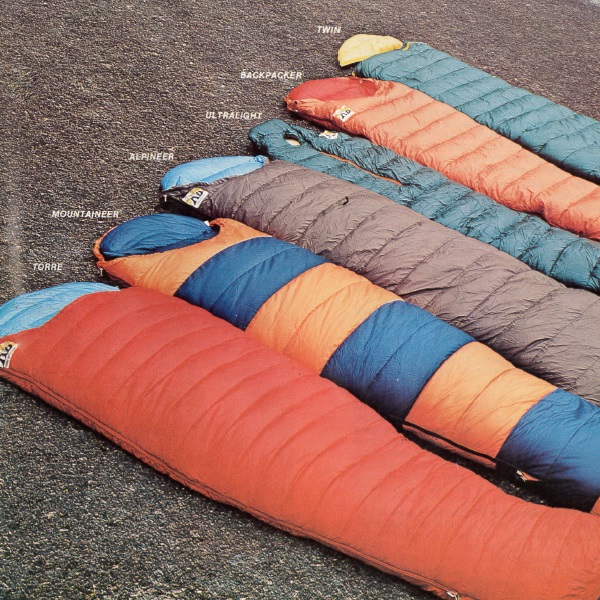
The canted footbox, seen here on the current UltraTek down sleeping bag model, was the first manufacturing innovation that Rick White brought to the market back in 1975 (left), and the full range from 1979 on display (right).
First with GORE-TEX® waterproof foot (1979)
First to use three-way dual zipper system (1982)
First with cowling hoods (1984)
The insulated hood that wraps around the head was introduced in 1984. A more thermally efficient design, it allows the hood to come around the top of your head while not risking the compression of down and causing cold spots. Generally, 3D hoods will also have face baffles.
First to offer trapezoidal baffling (1990)
Developed by our very own Rick White, the trapezoidal construction uses a separate material to separate the fill, like the box wall baffle construction. However, the trapezoidal construction uses an offset design to eliminate cold spots between seams. The trapezoidal shape also improves the down dispersion within the baffles.
Introduced 800 loft (2001)
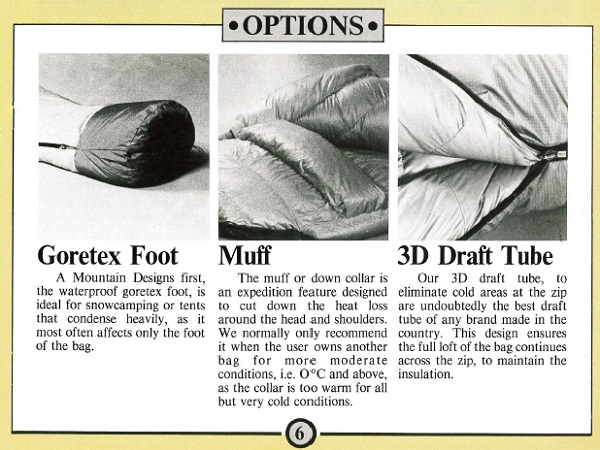
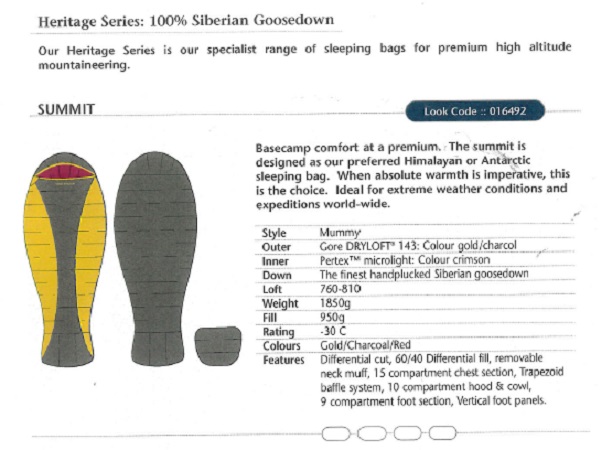
Sleeping bag design options shown in a 1982 product catalogue, including the GORE-TEX® waterproof foot, neck baffle and 3D draft tube (left), and the tech specs of the Pro Elite Heritage Series in 2002 produced for high altitude mountaineering (right).
Photo Credits
Images courtesy of:
Rick White Family
